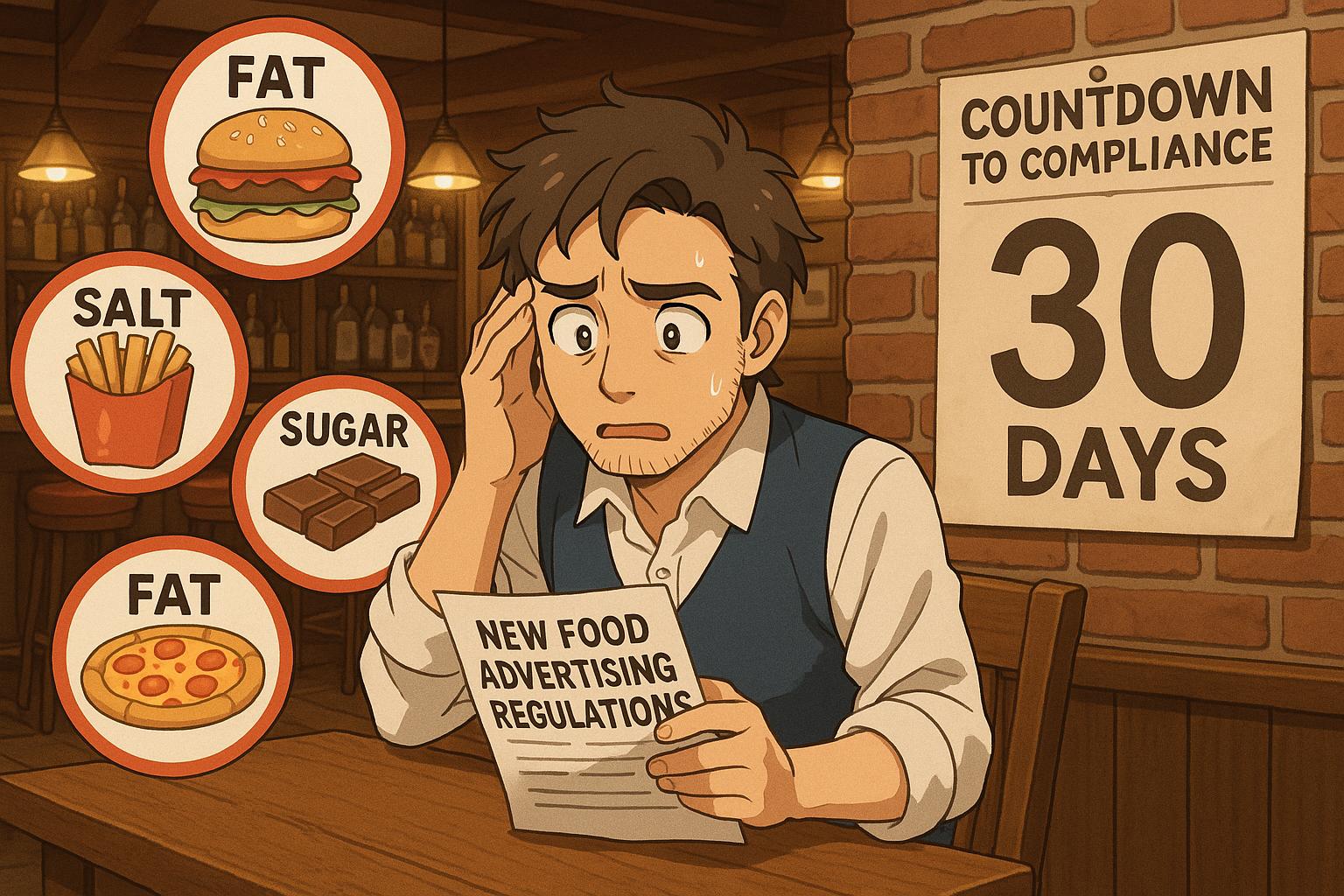Many UK food and beverage establishments, especially pubs, bars, and restaurants, are grappling with the impending changes in advertising regulations concerning foods high in fat, salt, and sugar (HFSS). Recent confirmation from the Government has extended the deadline for the implementation of the Less Healthy Food (LHF) regulations to January 2026. However, a voluntary commitment by 20 leading organisations—representing advertisers, broadcasters, and online platforms—will see restrictions coming into play this October.
New research from the creative marketing agency Linney highlights a concerning trend: fewer than one in ten food and beverage businesses have completed the necessary preparations for compliance with the LHF regulations. Only 8.8% have fully adapted their marketing strategies, while a significant 6.4% remain unclear about the specifics of what the legislation entails. Alarmingly, just 43.6% of the businesses surveyed reported feeling “very confident” about their readiness, with confidence notably trailing among operators within the pub and restaurant sectors, indicating a pressing need for further support.
The LHF legislation is a crucial component of the Government's broader strategy to combat rising obesity rates in the UK. This initiative will prohibit television advertisements for HFSS foods before 9 p.m. and impose restrictions on all paid online advertisements for such products. Almost half of the businesses surveyed by Linney reported plans to alter their promotional strategies in response to these upcoming regulations. Over 41% also indicated intentions to redesign their point of sale or modify their product offerings to ensure compliance.
Despite widespread awareness of the LHF legislation—with 92.4% of respondents indicating familiarity—only 14% stated they fully understood it. This knowledge gap was particularly pronounced among older respondents and employees in the pub and restaurant sectors. Jonathon Rhodes, co-director at Linney, expressed cautiously optimistic sentiments regarding the survey findings, noting the potential for businesses that act now to not only ensure compliance but also position themselves advantageously against competitors.
While many businesses still struggle with compliance, the survey reveals a strong recognition of the importance of such regulations, with 64% of respondents believing that these changes will contribute positively to public health. However, this optimism is coupled with apprehensions regarding food accessibility; 70% of those surveyed voiced concerns that compliance could inadvertently hinder access to affordable food and drink options, reflecting the complex challenges the industry faces as it strives to balance health initiatives with consumer affordability.
The delay in the implementation of regulations may provide a temporary reprieve for businesses, allowing them to adapt more thoughtfully to the evolving landscape of food advertising. Initially set to come into force in October 2025, the guidelines underwent revisions after lobbying from food businesses and broadcasters; they raised concerns about brand promotions potentially being unduly impacted by the restrictions. Nevertheless, the Department of Health remains steadfast in its commitment to combating childhood obesity, underscoring the necessity for regulatory frameworks that will dictate advertising practices around unhealthy food products.
As businesses navigate these changes, they have the opportunity not only to comply with new standards but to enhance their operational agility and align more closely with evolving consumer expectations. By anticipating the impact of these regulations early, establishments can foster an environment that prioritises public health while addressing affordability, ultimately ensuring a sustainable future for both their business and their clientele.
Reference Map:
Source: Noah Wire Services
